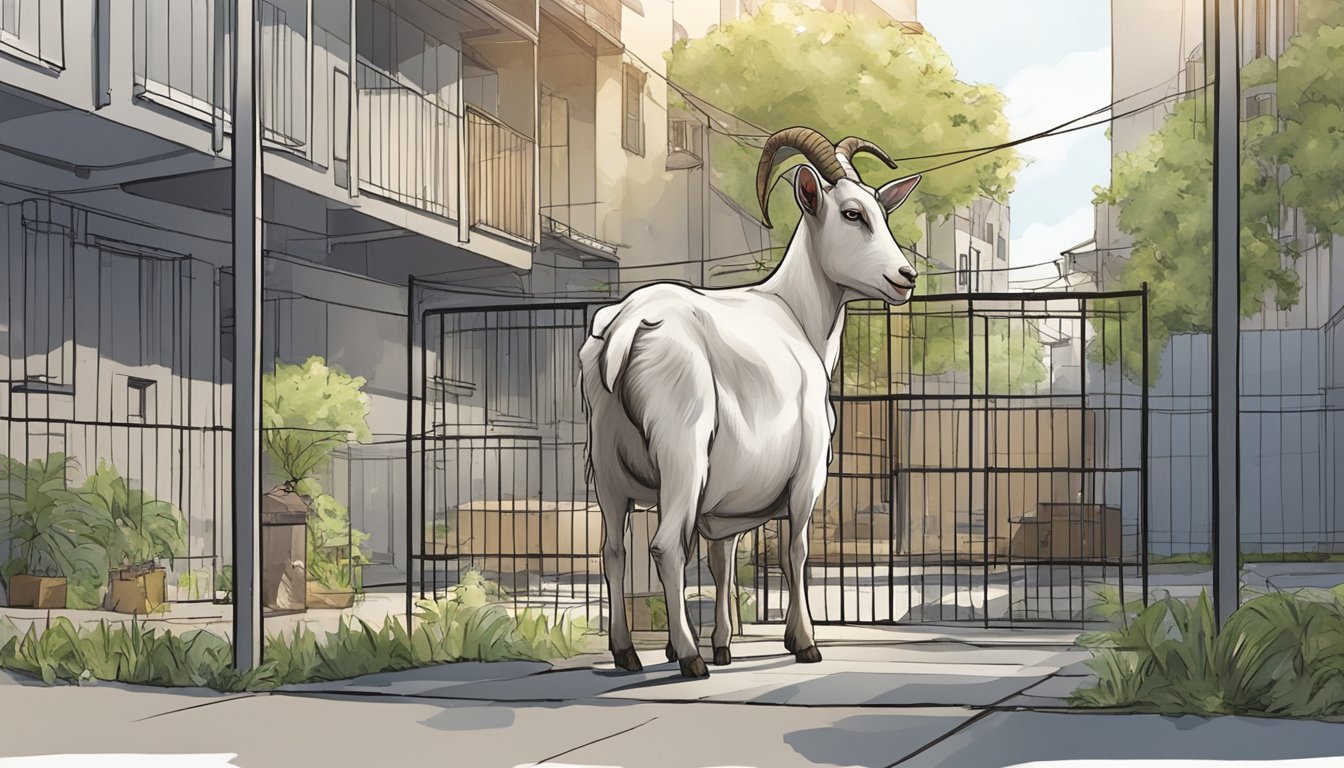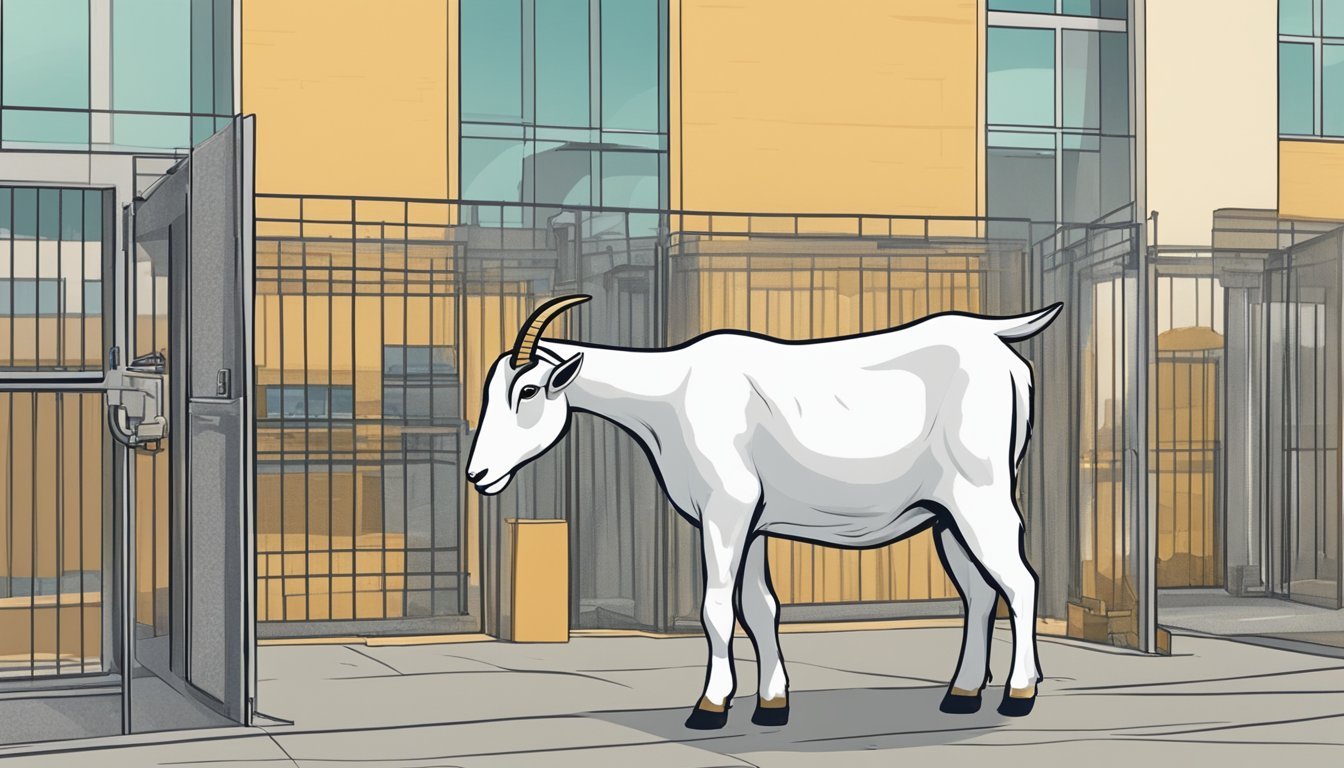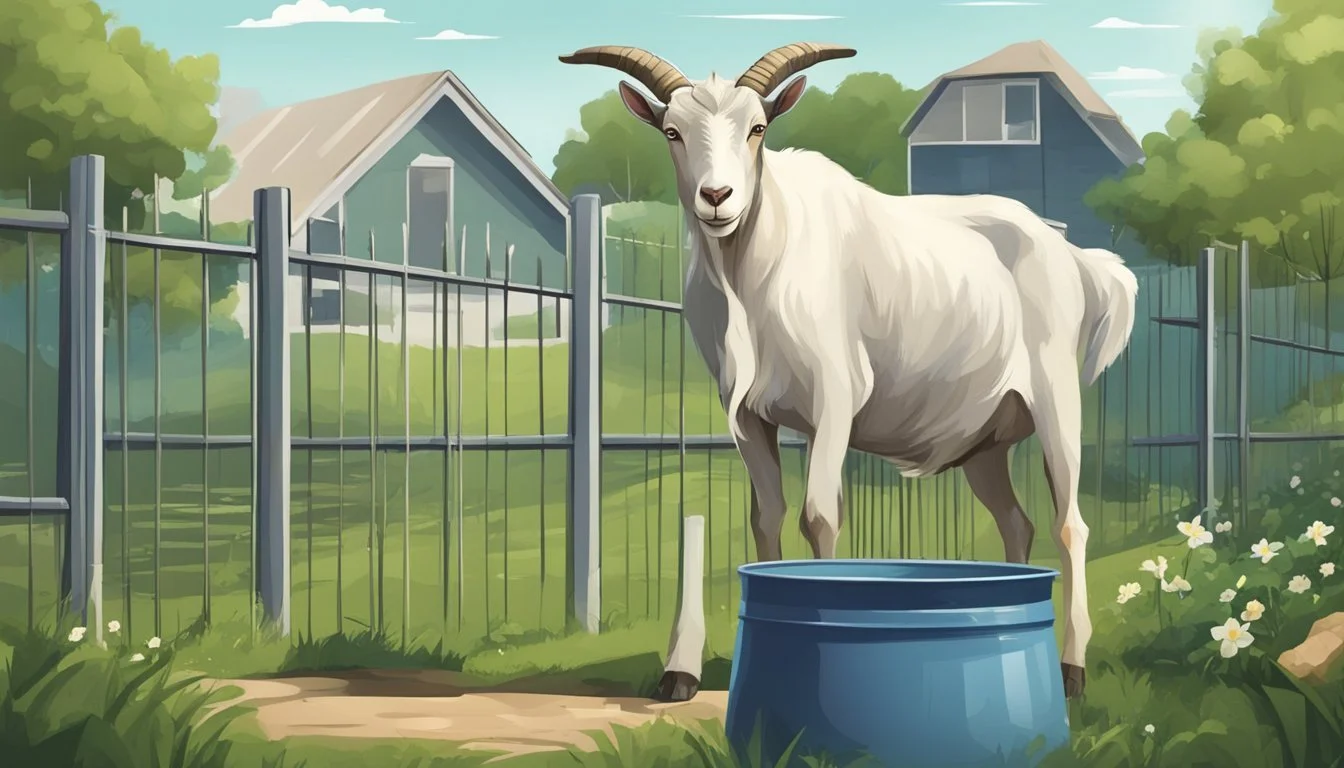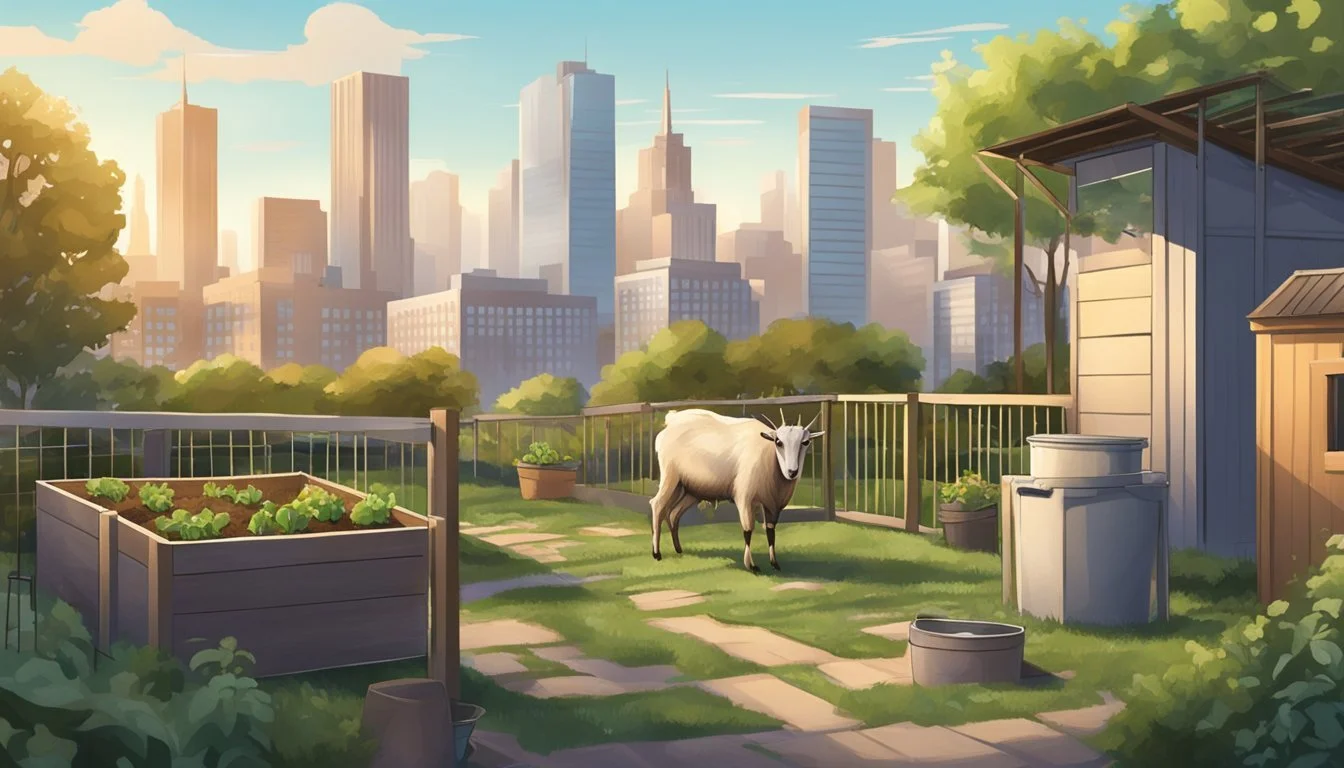Raising a Milking Goat in an Urban Setting
Overcoming Obstacles for Sustainable Living
Raising a milking goat in an urban setting presents a unique set of challenges that require innovative solutions. While goats are adaptable and smaller in size compared to cows, making them more manageable for city dwellers, the limitations of space and local regulations can pose difficulties. Urban agriculture initiatives like Street Goat are demonstrating that it is possible to integrate goat farming into the urban environment, turning underused spaces into productive areas for food production.
One key challenge is meeting the goats' nutritional and pastoral needs within a compact urban space. Additionally, goat farming is a commitment that extends beyond just providing shelter and food; goats require regular health checks and appropriate veterinary care. Moreover, goats, being social animals, thrive in the company of other goats, which calls for consideration of herd dynamics even in a limited urban space.
Potential goat farmers must also navigate the complexity of local ordinances regarding livestock in urban areas. Successful urban goat farming hinges on the adherence to legal requirements and maintaining good relationships with neighbors. However, solutions such as designing a suitable space can help mitigate these challenges, allowing city residents to enjoy fresh dairy products while contributing to sustainable urban living.
Understanding Urban Goat Farming
Urban goat farming presents a unique opportunity to integrate sustainable agriculture within a city's infrastructure. By navigating the legal landscape and leveraging the ecological benefits, residents can embrace a more self-sufficient lifestyle.
City Zoning and Legal Considerations
In America, cities have specific zoning laws that dictate urban agriculture practices. Residents must check with their local city ordinances to ensure goat farming is permissible and understand any restrictions on the number of animals, breeds allowed, and housing requirements. For example, Urban Agriculture and the Rise of the Urban outlines the significance of adhering to these guidelines to foster animal welfare and maintain community standards.
Benefits of Urban Goat Raising
Urban goat raising can significantly reduce greenhouse gas emissions by decreasing the reliance on commercial dairy products and encouraging local consumption. The benefits extend to both the environment and the community:
Localizing food production: Promotes fresher, less carbon-intensive dairy options.
Educational opportunities: Teaches city residents about sustainable living and animal care.
Community engagement: Encourages community gardening and shared resource initiatives.
Keeping Urban Goats in America provides an insight into how integrating goat farming into an urban setting can contribute positively to addressing climate change while enhancing the lived environment of the city dwellers.
Selecting the Right Goat Breed
When choosing a dairy goat for an urban farm setting, one must consider breed characteristics crucial for space constraints and milk production needs.
Characteristics of Dairy Goat Breeds
Dairy goat breeds exhibit diverse traits that influence milk yield, quality, and the animals' adaptability to urban environments. Key characteristics include milk production capacity, butterfat content, and temperament. For example, the American Dairy Goat Association highlights the importance of physical conformation and milk quality in dairy goats. Some breeds like the Saanen are known for their high milk yield but lower butterfat content, while breeds like the Nigerian Dwarf produce less milk, but with a higher butterfat ratio, which is desirable for cheese making.
Comparing Popular Breeds for Urban Farming
When comparing breeds for urban dairy farming, factors such as size, temperament, and milk output are pivotal. Here's a brief comparison:
Alpine: Hardy and adaptable, they're well-suited to varied climates and produce a moderate butterfat content.
Saanen: One of the most productive in terms of milk volume, Saanens are a good choice if space allows.
Nigerian Dwarf: Small stature makes them ideal for limited spaces; high butterfat milk is excellent for artisanal dairy products.
Nubian: Known for their distinctive long ears, they produce milk high in butterfat with a good yield.
Oberhasli: A quieter option with moderate milk production, suitable for smaller urban spaces.
LaMancha: Recognizable by their very short ears, they're great producers with a calm temperament.
Sable: Sables, related to the Saanen, offer high milk production with a slightly higher butterfat content.
European breeds like the Alpine and the Saanen are typically larger and thus may require more space, which is an important consideration for urban farming. Conversely, smaller breeds such as the Nigerian Dwarf and the LaMancha are oftentimes sought after for their manageable size and good milk production, making them fitting choices for city dwellers looking to raise dairy goats.
Essentials of Goat Nutrition
Proper nutrition for dairy goats is critical for their health and for the production of quality milk. Attention to diet and nutrient balance is essential for the wellbeing of the animals.
Feeding Requirements for Dairy Goats
Dairy goats require a balanced diet that includes a variety of nutrients to support milk production and overall health. They need:
Sufficient protein for milk production, typically from high-quality hay or a formulated goat feed
Adequate energy, often provided in the form of grains like corn, but should be carefully managed to prevent obesity and other health issues
Fiber for proper digestion, which can be supplied through access to pasture or hay
A common guideline is to provide dairy goats with a ratio of feed that reflects their milk output. For instance, a goat producing a high amount of milk may require more grain to maintain its body condition.
Nutrient Management and Forage
Forage forms the basis of a dairy goat's diet and includes grasses, shrubs, and other plants they naturally consume. It is crucial for:
Natural resources for nutrients beyond what formulated feeds can provide
Helping meet their mineral needs, such as calcium and iron, which are vital for the goat's health and milk quality
Providing a mineral supplement can ensure that goats are receiving all the necessary nutrients, especially in urban settings where natural forage might be limited. Forage quality should be monitored to ensure it is free of toxic plants and provides adequate nutrition.
Housing and Space Management
Proper housing and space management are crucial for the welfare of milking goats in an urban setting, addressing environmental concerns and effective manure management. Intelligently designed living spaces can considerably enhance the health and productivity of the herd.
Designing Suitable Living Quarters
The design of living quarters for milking goats must prioritize animal welfare and should follow agricultural best practices. It should include controlled environmental factors like air temperature and humidity, as mentioned in ScienceDirect. Goats require clean, dry, and well-ventilated housing to prevent diseases and promote good health. Essential features should include:
Adequate space: Goats need space for rest, movement, and social behaviors.
Manure management: A system that regularly removes waste to maintain hygiene and minimize odors.
Access to feed and water: The design should allow easy access to feed and water to meet their dietary needs efficiently.
Utilizing durable, easy-to-clean materials can mitigate long-term maintenance challenges and assist in sustaining an environment conducive to the goats' well-being.
Space Efficiency in an Urban Environment
In urban areas, optimizing space is paramount due to limited available land. Creative solutions such as multi-level structures or vertical farming techniques can offer additional space without increasing the footprint. Ensuring goats have access to adequate exercise areas, such as those shown in New Mexico State University's guide, is essential for their physical health and mental stimulation.
Incorporating these concepts into urban goat housing requires:
Space-saving designs: Such as shared water resources between pens or collapsible feeding troughs.
Exercise areas: Providing both inside shaded and outside accessible areas allow for essential physical activity.
Optimal use of vertical space: Where applicable, installing lofts or elevated platforms to increase usable area.
Health and Veterinary Care
When raising a milking goat in an urban setting, maintaining their health requires regular attention and proactive measures. A properly cared for goat can yield substantial health benefits through its milk, while neglect can lead to illnesses that may stem from harmful bacteria.
Routine Health Checks and Preventive Care
Goats require consistent health checks and a preventive care regimen. Owners should establish a relationship with a veterinarian who is experienced with goats and schedule regular exams. These examinations often include:
Vaccinations: To prevent common diseases.
Hoof trimming: To prevent foot problems that can lead to infection or lameness.
Deworming: To rid the goat of internal parasites that can cause malnutrition or illness.
Body condition scoring: To assess the nutritional and overall health status.
This preventive approach helps to identify potential issues early on, ensuring that the goat remains healthy and productive.
Dealing with Common Health Issues
Urban milking goats may encounter health issues that necessitate immediate attention. Owners should be knowledgeable about:
Mastitis: An inflammation of the udder often caused by bacteria, which can affect milk quality and quantity.
Enterotoxemia: A serious bacterial condition that can be prevented with regular vaccinations.
Respiratory infections: Common in changing urban weather conditions and can be managed with proper shelter and care.
Understanding the signs of these conditions allows for swift treatment, reducing the risk of severe health impacts on the goat and potential contamination of its milk.
Breeding and Reproduction
Breeding and reproduction are critical aspects of dairy goat production. Successful breeding ensures a steady supply of milk and the continuation of the herd.
Understanding the Breeding Cycle
Breeding dairy goats requires an understanding of their reproductive cycle. Goats experience estrus, commonly known as heat, indicating their readiness to breed. This occurs every 18-24 days and can be recognized by increased vocalization, restlessness, and a swollen vulva. To initiate milk production, mating with a buck must occur during this estrus period. Gestation lasts approximately 150 days, and owners should ensure a proper breeding schedule to align with milk production demands and kidding seasons.
Caring for Kids and Managing Kidding
After a successful gestation period, the process of kidding begins, which requires diligent care and management. Newborn goats, or kids, should be attended to promptly to ensure they receive colostrum within their first hours of life. This crucial step impacts their future growth and health. It's important to monitor both the doe and kids during this period for signs of complications or illness. Proper nutrition, sanitation, and veterinary care are essential for maintaining the health of the kids and the lactating doe to ensure sustained milk production.
Milk Production Fundamentals
Understanding the dynamics of milk production is crucial when raising milking goats in urban settings. Proper management and processing are key to maximizing yield and ensuring the production of good quality goat milk, which serves as the foundation for cheese, yogurt, and other dairy products including goat milk soap.
Optimizing Milk Yield
To optimize milk yield from dairy goats, their diet should include a proper balance of nutrients. A common guideline is to provide 1 pound of grain for every 3-5 pounds of milk produced, which helps in maintaining their health and peak milk production. Additionally, consistent access to free choice hay is important, unless the goats are overweight, in which case their diet should be adjusted accordingly. Ensuring that goats have ample fresh water at all times is also essential, as it directly impacts their milk output. It is crucial to pay attention to the lactation cycle, which affects goat milk production and implement appropriate feeding strategies corresponding to each stage of the cycle.
Processing and Utilizing Goat Milk
Once milk has been collected, processing steps need to be followed to ensure the safety and longevity of the milk for consumption. Raw milk should be stored at the correct temperature and undergo pasteurization to eliminate harmful bacteria, preserving its good quality. This processed milk can then be used for a variety of products. For instance, goat milk has unique properties that make it excellent for cheese making due to its high beneficial bacterial content and suitable fat-to-protein ratios. Yogurt is another product that can be created from goat milk through bacterial fermentation, offering a product that's often more digestible to individuals sensitive to lactose. Moreover, goat milk soap is renowned for its gentle, moisturizing properties and can be made by combining the milk with lye and other natural ingredients.
Marketing and Economics of Urban Goat Farming
When considering the integration of a dairy goat herd into an urban locale, the potential urban farmer must primarily focus on two major challenges: pinpointing the prevailing demand for locally sourced goat products and deftly navigating the economic landscape to secure a profitable market niche.
Assessing Demand and Building a Customer Base
In the realm of urban goat farming, one must first assess the existing demand for goat milk products. Dairy production efficiency is crucial; therefore, understanding consumption patterns helps tailor production to meet customer needs. Urban consumers often prefer artisanal cheese and other dairy goat products over mass-produced alternatives, presenting opportunities to those who can capitalize on the trend towards locally sourced goods. Initiatives that facilitate direct connections with potential customers, like attending local farmers' markets or hosting farm-to-table events, establish vital community presence.
Economic Considerations and Finding a Market Niche
The economic viability of urban goat farming hinges on judicious investment and the exploitation of marginal areas for dairy goat production. Selecting suitable dairy goat breeds can enhance production efficiency, catering to the specific demand in urban settings. Commercial urban farms should concentrate on specialized products that are not easily available in regular markets, carving out a market niche. By focusing on high-value, niche markets, such as selling artisanal cheese to gourmet food shops, urban farmers can bolster their income and contribute to food security. The initial investment may be substantial, but strategies that focus on commercial farms with a high yield of prized products can result in a swift and sustainable return.
Environmental and Community Engagement
Raising milking goats in urban settings presents unique challenges and opportunities. It requires a diligent approach to environmental stewardship and proactive community engagement to ensure both sustainable practices and educational benefits.
Sustainable Practices in Urban Goat Farming
Urban goat farming necessitates a balance between animal welfare and natural resource management. Cities must carefully manage land use to accommodate goats without compromising green spaces or causing undue stress to the animals. Sustainable urban goat ventures, like Street Goat, exemplify how disused city areas can be transformed into productive farmland, benefiting both the environment and locals. These farms typically prioritize:
Greenhouse Gas Emission Reductions: By sourcing feed locally and minimizing transportation, urban goat farms can reduce their carbon footprint.
Local Consumption: Fresh goat milk and meat provided by city farms ensure food security with minimal environmental impact due to shorter supply chains.
Educational Opportunities and Community Benefits
The presence of goat farming in an urban setting provides tangible educational opportunities. Schools and community groups can learn about agroecology and where their food comes from, an especially vital lesson in city environments often detached from rural farming realities. Highlights of community outreach can include:
Workshops: Teaching sustainable farming practices and animal care.
Local Partnerships: Aligning with markets and restaurants to promote local consumption and bolster the urban economy.
Projects like Detroit's urban agriculture underscore the potential for urban farming to not only serve as a food source but also as an educational tool, fostering a community-focused, environmentally conscious mindset among urban residents.
International Perspectives on Urban Goat Farming
Urban goat farming presents a unique set of challenges and opportunities that vary across different global contexts. This section explores case studies from around the world and discusses the adaptation of goat farming practices to diverse urban climates.
Case Studies from Around the World
In Europe, urban goat farming has seen a recent upsurge with initiatives aiming to integrate dairy goat production into city life. The European breeds, often managed by smaller enterprises, contribute to local economies while providing fresh dairy products. For instance, projects in Europe have been focusing on overcoming issues related to space constraints and urban animal welfare regulations.
Moving to Asia, countries like India have incorporated goats into the urban agricultural landscape, often as a response to increasing demand for goat milk and meat. In Africa, initiatives in cities aim to combat food insecurity by including dairy goats in urban agricultural projects, where they not only provide milk but also aid in waste management by consuming organic refuse.
North America has seen a trend in urban goat farming with support from organizations like the American Dairy Goat Association. Cities in the United States have begun amending zoning laws to allow for small-scale goat herding, providing residents with alternative sources of fresh dairy products, while in Canada, goats are part of community-based sustainable food systems in urban areas.
Adapting Practices to Different Urban Climates
In regions with arid areas, like certain South American cities or parts of Africa, urban goat farming has been adapted to suit harsh climates. For example, in Brazil and Haiti, goats are a favored choice for urban farming due to their resilience and low water requirements, making them suitable for hot, dry urban environments where water conservation is critical.
Sensitivity to climate change is key, as urban goat farming can be both an asset and a victim. Urban farmers are adopting practices that reduce greenhouse gas emissions through methods like improved feed efficiency. In contrast, operations in cooler urban climates have to account for shelter and adaptations in breeding to ensure the well-being of the goats.
To encourage urban goat farming, certain cities have offered subsidies and incentives, thus acknowledging the role of goat farming in sustainable urban development and its potential for contributing to green city initiatives.






